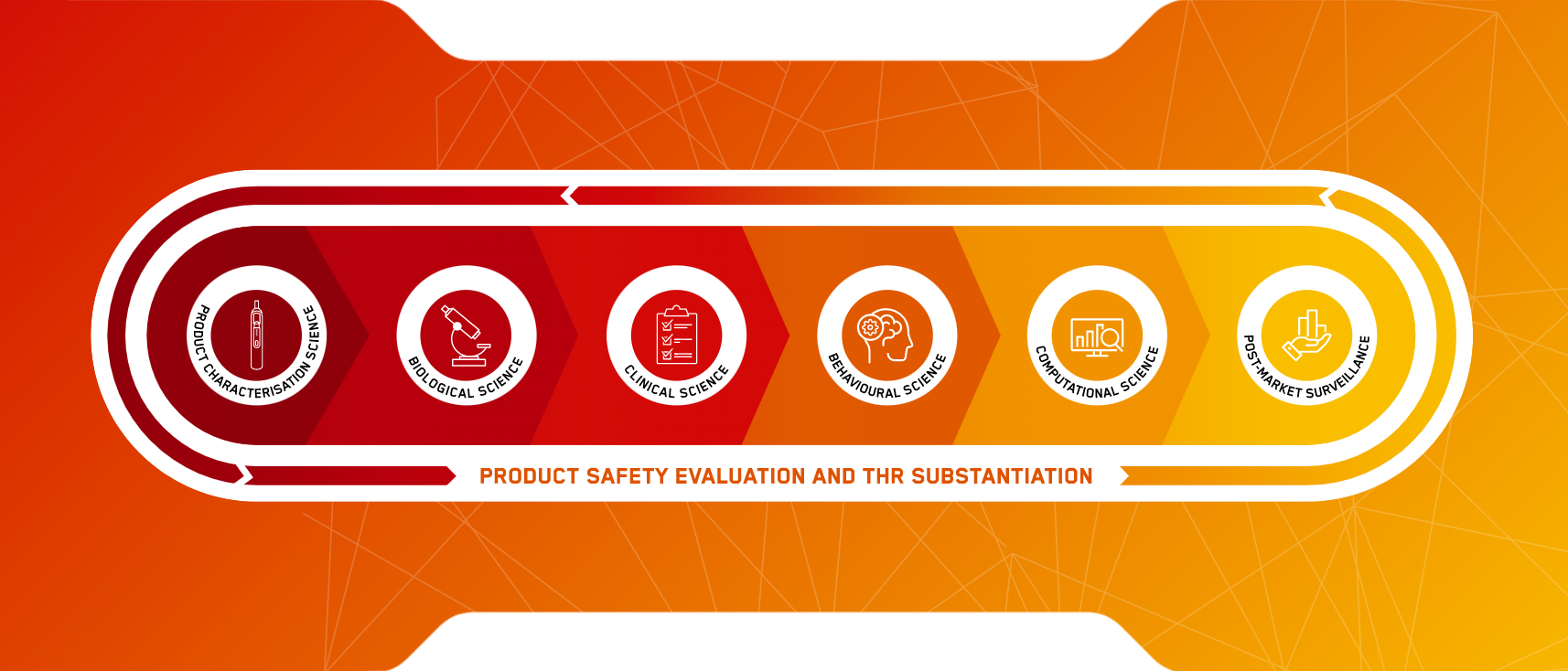What’s your name and your current role at Imperial Brands?
I’m Victoria Taverner, Product Characterisation Manager. I’ve been with Imperial for five and a half years. My background is in toxicology and I’ve been working in the field for around a decade, including stints in veterinary and medicinal science.
In simple terms, what’s our Scientific Assessment Framework (SAF)?
Our SAF is a programme of multi-disciplinary studies. Together, they help substantiate the risk profiles, performance and tobacco harm reduction potential of our Next Generation Product (NGP) portfolio.
Why do we perform Product Characterisation Science, and why is it an important part of the SAF?
Product Characterisation takes place at the beginning of an NGP’s progress through the SAF. Our team of professionally qualified scientists design and oversee the conduct of various scientific studies – including toxicant analysis, bystander exposure, stability testing and device certification – to provide the business with an understanding of the chemical and physical characteristics of our NGP.
Before our products are offered for sale to consumers, our team also ensures our NGP are compliant with specific launch market regulations and our manufacturer’s duty of care.
Can you explain a bit more about duty of care?
Our duty of care as a responsible manufacturer ensures our NGP have been manufactured to high quality standards and have passed all the relevant tests required by standards bodies and regulators.
The Product Characterisation team are guided by written documents called standards of care when we’re designing studies to demonstrate the risk profile and performance of our NGP portfolio.
Can you elaborate on some of the key research the team perform on new NGP?
We conduct laboratory studies on materials in our NGP products that are in contact with the consumer. For our blu vapes, for instance, our focus would be on both the device itself and the e-liquids it contains as the consumer will be exposed to both these parts of our product.
We would also conduct extractable and leachable studies on the device, as we want to understand what chemical compounds may potentially migrate from the device to the e-liquid or aerosol. These tests are performed to ensure that our consumers aren’t exposed to chemical compounds at levels which may be potentially harmful.
We also look at mouthpiece and aerosol temperatures to ensure our consumers won’t be exposed to any potential harms from the device.
What about the materials that are not in contact with the consumer?
These materials must comply with the relevant standards also set out in our standards of care. So, the electrical components of the device – the wires and circuit board, batteries and device and even accessories like USB cables and wall chargers – must all comply with their relevant standards and regulations to ensure they work as intended.
What are vape e-liquids emissions studies?
Consumers are exposed to the aerosol vapes produce when they atomise e-liquids, so we perform emissions testing which monitor the levels of aerosol-collected mass, nicotine, carbonyls and metals. This help build a picture of the reduced risk potential of the NGP – like vapes – we’re proposing our adult smoker consumers switch away from cigarettes towards.
What are HPHCs and why do we compare the performance of our NGP portfolio to combustible cigarettes?
Cigarette smoke is a complex mixture of chemical compounds – within this complex mixture, harmful and potentially harmful constituents (HPHCs) have been associated with the onset of disease in smokers.
Nine HPHCs were proposed by the WHO study group on tobacco product regulation for reduction in cigarette smoke – known as TobReg9. We compare the levels of these 9 HPHCs within our NGP to the levels produced from the smoke of combustible cigarettes to help build the evidence base demonstrating their tobacco harm reduction potential.
What are product stability studies?
These studies investigate how the properties of a NGP formulation change over time, allowing us to determine an appropriate shelf life for our portfolio.
What are the most interesting or exciting elements about your team’s role in the business?
It’s fantastic to work on such a huge range of projects on a day-to-day basis – from tobacco-free oral nicotine pouches to heated tobacco and vapes. We have an extensive science and innovation programme, so there are always lots of ongoing studies being conducted that are helping us substantiate the performance of our NGP portfolio.
Is science key to creating impactful NGP?
Absolutely! Science is how we demonstrate the potential reduced risk and performance of our NGP, and plays a crucial role in gaining the trust of our customers.
What’s it like working in Imperial’s scientific function?
I love it; they are so many talented people with fantastic professionalism and there’s a tangible sense of energy and team spirit. It’s great to work for a company that values individualism and neurodiversity, and I believe these qualities are reflected in our output. Imperial takes care of its people while striving to produce quality products and a broad choice of NGP for our consumers.

You are free to share this content with credit to Imperial Brands under a Creative Commons Attribution-NoDerivatives 4.0 International (CC BY-ND 4.0) license.
